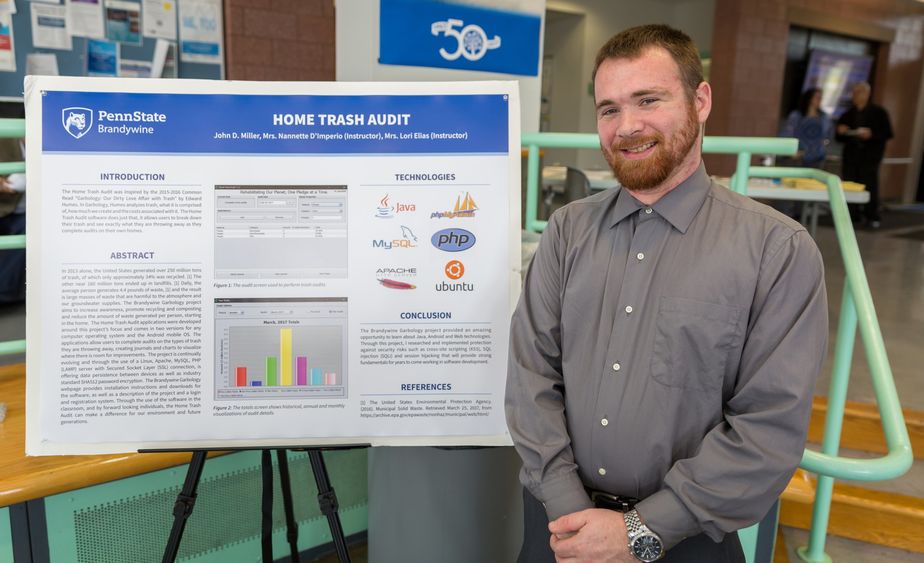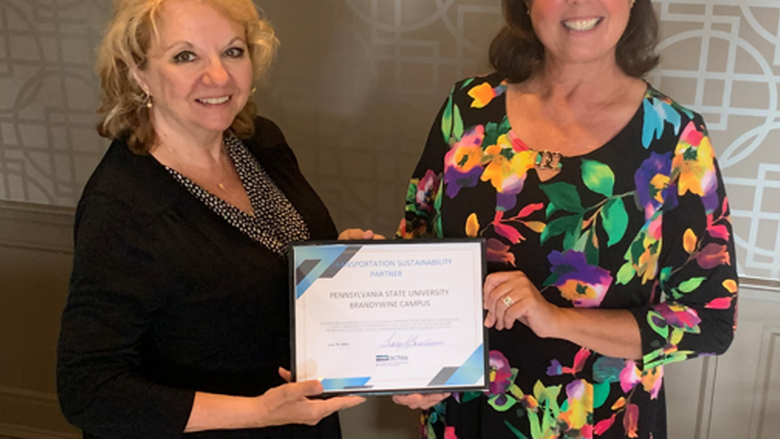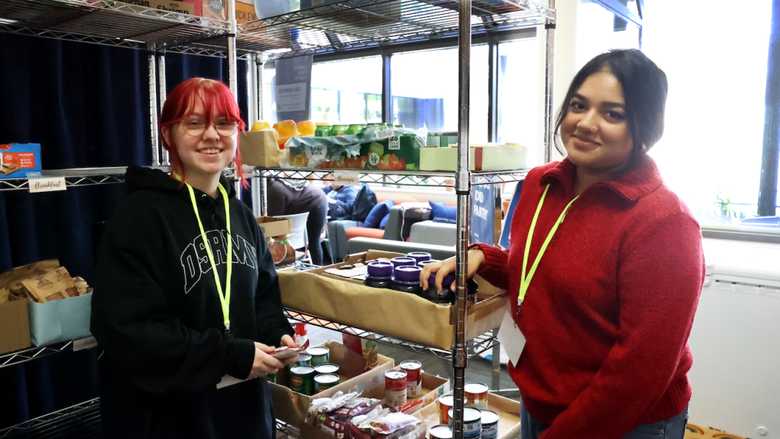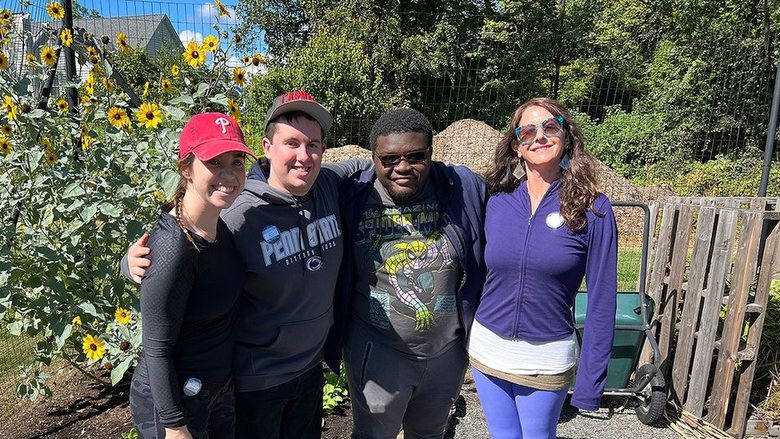
John Miller displays a poster about his garbage-tracking app project at Penn State Brandywine's Exhibition of Undergraduate Research Enterprise and Creative Accomplishment. The annual event allows students to present their work to the campus community.
Last year, a reading program at Penn State Brandywine led a course instructor and a student to team up for the creation of a garbage-tracking Android app.
The project began when Lori Elias, instructor in marketing at Penn State Brandywine, was serving as chair of Brandywine’s Common Read program—a campus tradition that provides a year-long opportunity for Brandywine students to dialogue about a shared text.
“While I was chairperson, we chose ‘Garbology’ by Edward Humes as our Common Read text,” said Elias. “The book focuses on how our country both creates and disposes of garbage.”
“Garbology,” for many of the students in the Common Read program, was eye-opening.
“Most Americans have no idea how much garbage our country produces per year,” Elias said. “That’s where we came up with the idea for an app that would do ‘trash audits’ and help people track and change their habits.”
To make her idea a reality, Elias reached out to Nannette D’Imperio, instructor in information sciences and technology (IST) at Brandywine, about the possibility of working with a student to create a garbage-tracking app. D’Imperio introduced Elias to John Miller, senior IST major at Brandywine.
Although Miller was not involved in the Common Read program, he quickly grasped Elias’s vision. He designed an entry-based app similar to a calorie tracker, allowing the app’s user to log their garbage consumption based on generic measurements.
“We kept the units arbitrary on purpose,” said Miller. “Most people don’t measure their garbage in terms of pounds, for example—but labels like ‘large box’ and ‘small box’ help keep people aware of how much trash they throw away, and that’s the main goal.”
“John was good at taking my vague ideas and making them come true,” said Elias. “I shared my ideas with him and gave him leeway to problem-solve.”
For Miller, designing the app was a chance to refine his IST skills while combining his field’s strengths with another educational program.
“I’ve developed apps for class assignments, but nothing to this scale,” he said. “This was also my first time developing an Android app. I also enjoyed the crossover between IST and the Common Read—I like to do what I can to work with other groups on campus.”
In addition to fulfilling Elias’s vision and enhancing Miller’s educational experience, the app has promoted sustainability on campus. David Macauley, associate professor of philosophy and environmental studies and the current chair of the campus’ sustainability committee, praised Miller for contributing to the campus dialogue on environmental responsibility.
“We, the Brandywine educators, are working to incorporate sustainability into our classrooms, architecture, research and campus landscape,” Macauley said. “John’s app should help both to promote awareness of an important environmental issue and to change habits and behavior in positive ways. It's great to see our students taking initiative.”
To learn more about Brandywine’s commitment to sustainability, visit the campus website. To download or learn more about Miller’s app, visit the John Miller Coding website.




